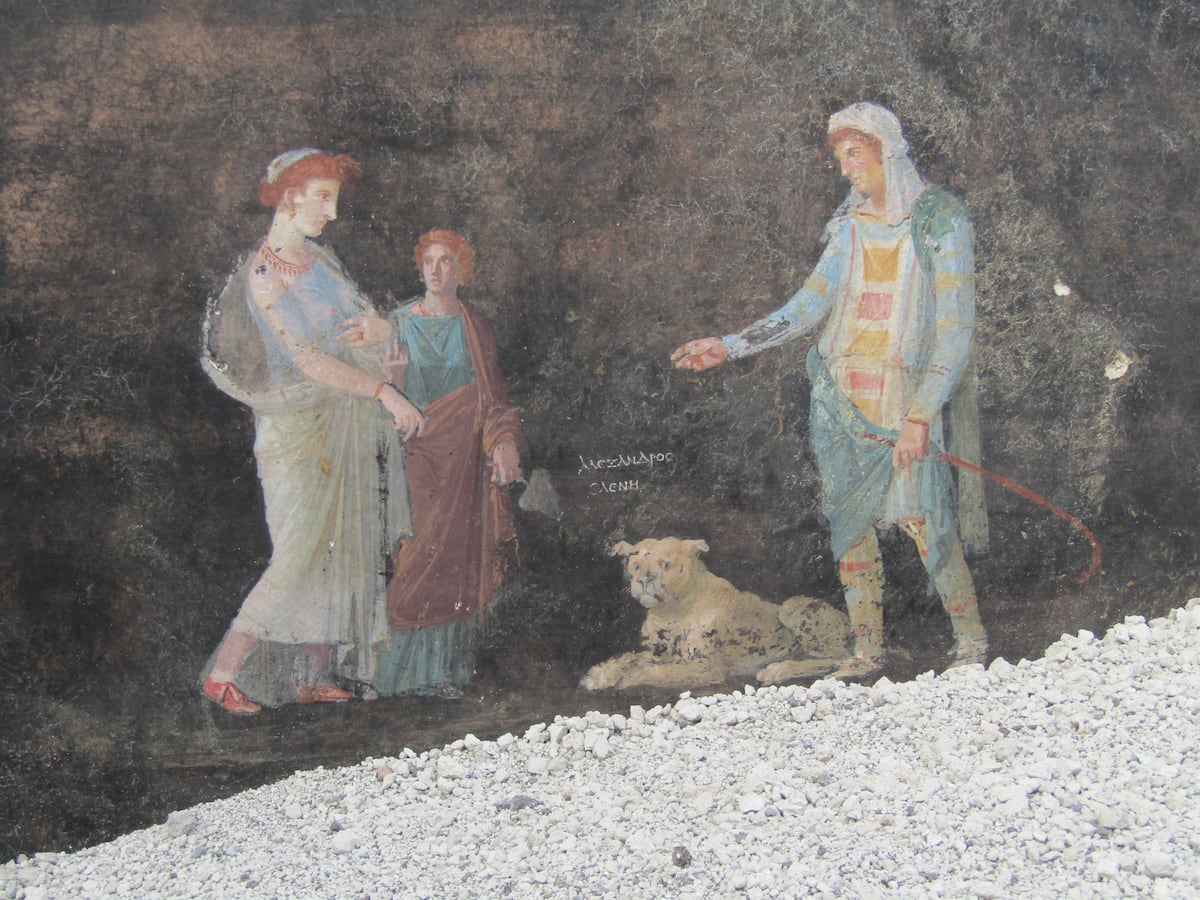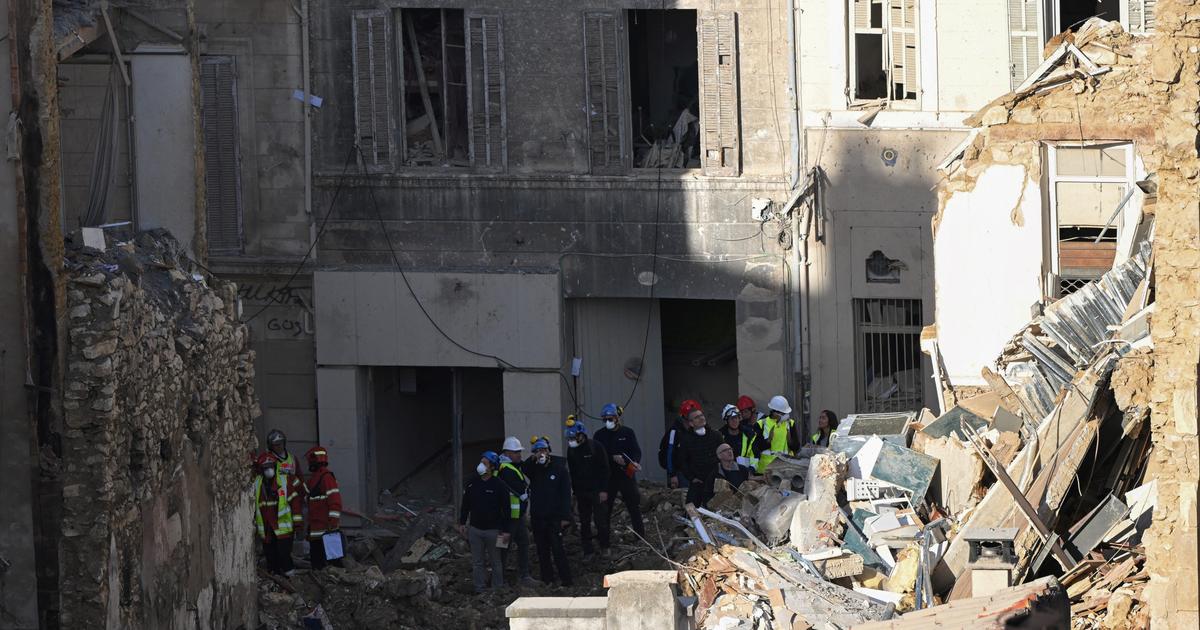The architectural richness of Hadrian's Villa (AD 76-138) in Tivoli already commanded the admiration of Marguerite Yourcenar and generations of visitors, artists and curious people in love with the luxurious retreat of the theater. maritime and Philhellenic references of the Long Canope.
From now on, we must keep in mind the majestic aquatic staging of one of the banquet rooms located in the heart of the imperial residence: the theater of a spectacular set of marble and fountains in the exclusive service of the projection of imperial power.
Read also: Archeology: Hadrian's villa threatened
Excavated by a team of Spanish archaeologists, the triclinium - the Roman banquet hall - has been identified in the area known as the Imperial Residence, the oldest part of the site once occupied by a patrician villa from the Republican era.
Unheard of luxury, this triclinium was located on a Carrara marble platform placed in the middle of a basin, and which was accessed by retractable walkways.
Itself nestled in an exedra pierced with windows and transformed into a nymphaeum, the room must have given the impression of a marble island lost in the middle of a sea of fountains.
A staging of power
A discovery deemed "
thunderous
" by Rafael Hidalgo Prieto, the director of the excavation.
“
It's absolutely unique in the world.
There is no other banquet hall as sophisticated as the one we found at Hadrian's Villa,
”he told Spanish daily
ABC
.
According to the archaeologist, the edges of the banquet platform may even have been decorated with leonine protomes from which water also spurted out.
“
It's a new example of a certain idea of opulence that appears very often in Hadrian's villa.
"
1/3 - Reconstruction of the aquatic triclinium.
The painted decoration and other ornamentation are not yet documented with certainty.
Villa Adriana e Villa d'Este / Courtesy of Prof.
Enrica Giuseppina Cinque, Università Tor Vergata di Roma / Arche Society
2/3 - Hypothetical restoration of the hydraulic devices of the imperial residence of the villa.
Villa Adriana e Villa d'Este / Courtesy of Prof.
Enrica Giuseppina Cinque, Università Tor Vergata di Roma / Arche Society
3/3 - Perimeter (in red) of the “imperial residence”, within the larger site of Hadrian's Villa.
Villa Adriana e Villa d'Este / Courtesy of Prof.
Enrica Giuseppina Cinque, Università Tor Vergata di Roma / Arche Society
Surrounded by four small annex rooms just as richly decorated, this banquet space could probably not accommodate more than three people.
According to archaeologists, this could have been the place where the Emperor took his breakfast, in a small company and in a staging all in the majesty of power.
"
It was an almost theatrical spectacle
," said Andrea Bruciati, director of the Hadrian's Villa site, quoted by the
Times
.
“
The purpose of the villa was to represent the divinity of the emperor.
It was almost futuristic.
Politicians could learn from him today.
"
This aquatic triclinium was powered by an ingenious hydraulic device which traversed the entire architectural elevation by a stacked set of miniature cisterns.
What is more, “
the Spanish team found embryonic architectural elements which will later be developed in the Canopus complex”,
also recalled Andrea Bruciati, referring to a first triclinium-basin system discovered in the excavated area.
Read also: Coronavirus, the 2020 Villa d'Este Concourse of Elegance canceled
A daring architecture
Excavated since 2003 by archaeologists from the Sevillian University Pablo de Olavide, the area of the former Republican villa continues to provide new details about the first works carried out by the emperor, at the time of the development of his residence.
It is more certain than ever that the nascent Hadrian's Villa immediately stood out from the older buildings by an avant-garde and innovative use of new architectural and ornamental forms.
At the forefront of what could then be imagined, this new architecture will not be taken up by the successors of the emperor.
"Too daring, too modern, it exceeds the capacity of Roman architecture of the time to accept innovations",
believes Rafael Hidalgo Prieto, for whom it is obvious that with his villa, Hadrian
"invented something"
.
"Hadrian's architecture is neither Greek nor Roman, it is an Adriatic architecture, that is to say the translation of Greek influences into a purely Roman mentality,"
he continues
.
Audacity based on fleeting perspectives, games of curves and counter-curves - sometimes concave, sometimes convex - which will later inspire baroque architectures such as Borromini, and even up to Frank Lloyd Wright and Le Corbusier.
Read also: The baroque in all its exuberance
Located near Tivoli, at the foot of the Apennines and only about 30 kilometers from Rome, the villa complex covers nearly 120 hectares.
Arranged by Hadrian in several phases, from 118 AD.
AD, the various pavilions of the complex are inspired by Greek, Hellenistic and Egyptian models dear to the emperor.
Abandoned during late Antiquity, the villa was rediscovered in the middle of the 15th century.
Closed due to the pandemic, it has just reopened to the public this week.





/cloudfront-eu-central-1.images.arcpublishing.com/prisa/OSGEZYSHPFIONDIBR432LV5FBY.jpg)



